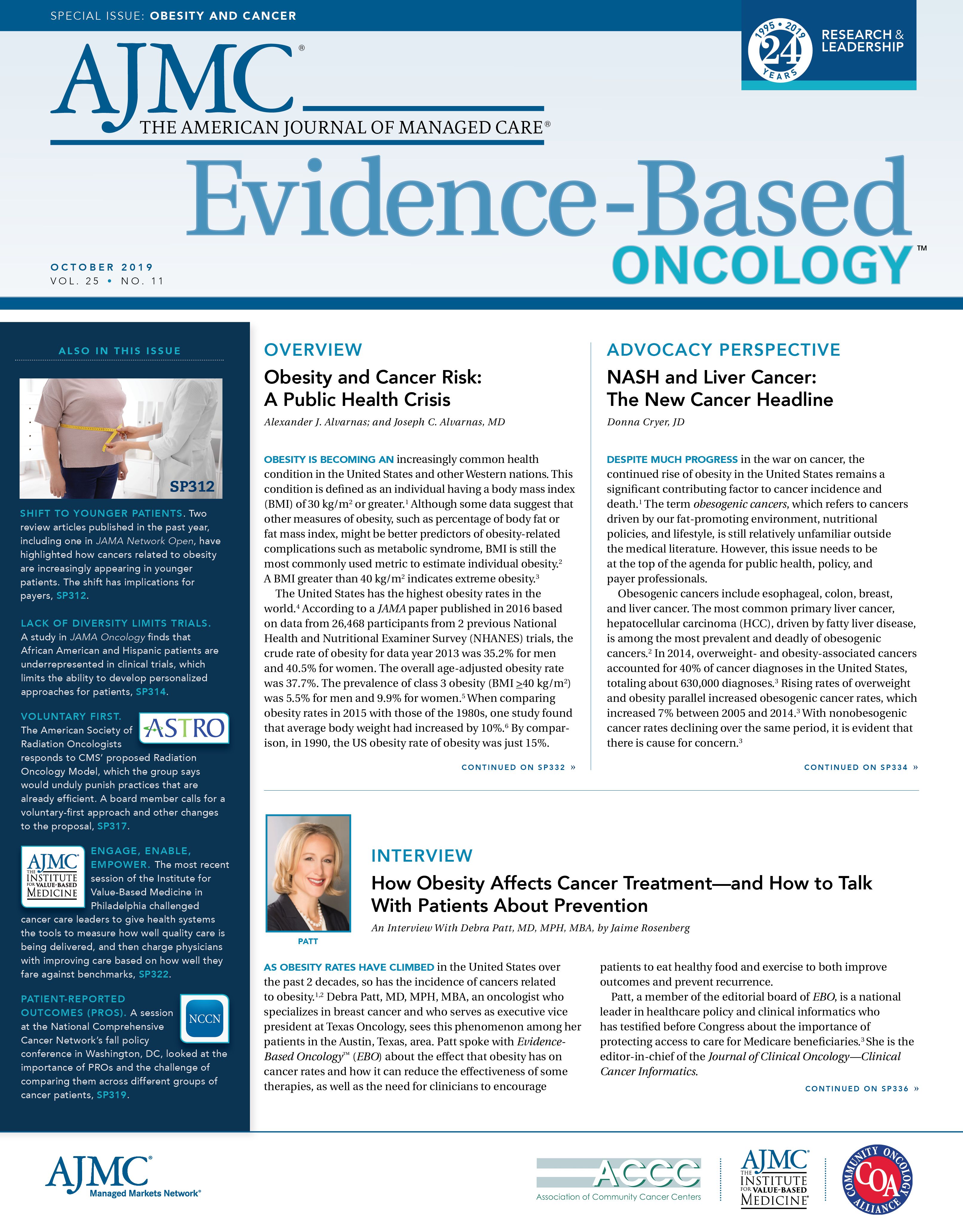- Center on Health Equity & Access
- Clinical
- Health Care Cost
- Health Care Delivery
- Insurance
- Policy
- Technology
- Value-Based Care
From the Editor-in-Chief: Reality Isn't That Simple
Reality seems so simple. We just open our eyes and there it is. But that doesn’t mean it is simple. Penn and Teller
Over the past decade, we have developed an extraordinary pipeline for innovative anticancer therapeutics. This period of unprecedented innovation in oncology has been profoundly edifying for patients and cancer physicians who have watched the seemingly unchanging poor prognosis for several cancer types improve dramatically based upon the rapid identification of targets and the emergence of lifesaving therapeutics. The greatest optimist would not have predicted this pace of change 2 decades ago. Yet, in the midst of this progress, we have missed a golden opportunity: The best anticancer treatments are those we never have to administer.
After a deep dive to understand the link between obesity and cancer risk for this issue, only in retrospect did I realize the full depth of my ignorance. Obesity is a significant, growing, and avertable cause of cancer for a large number of patients. The scope of the problem is daunting, and the human toll of the current obesity epidemic is extraordinary. Since 1990, US obesity rates have risen from 15% to approximately 37%. Sadly, the United States has the dubious distinction of having the highest obesity rates in the world. Whereas the role of obesity in increasing the risk of hypertension, diabetes, dyslipidemia, cardiovascular disease, stroke, and musculoskeletal disorders is well recognized, there is far less awareness about the impact of obesity upon cancer risk.
Obesity is on the verge of becoming the most common preventable cause of cancer in the United States. Data from large-scale population studies demonstrate a greater cancer risk due to obesity for more than 20 cancer types, and additional data demonstrate inferior cancer care outcomes for patients considered obese. Beyond the immense human toll, the societal costs of the obesity epidemic are extraordinary, with one estimate of obesity-related excess healthcare expenditures totaling more than $200 billion annually.
The majority of my professional career has been spent delivering anticancer treatments; I am a blood and marrow transplant physician. Either by training, avocation, or plain inclination, I have devoted far less of my professional energy to the equally important work of cancer prevention. Unlike our anticancer armamentarium that can be unleashed quickly, discretely, effectively, and stereotypically based upon clinical evidence and standardized treatment approaches, undoing the obesity epidemic represents a much more complex set of tasks that requires both a wholesale change in human behavior and a deep societal commitment to bring about fundamental cultural change. Sometimes the public discourse around this issue simplifies the level of commitment required, and not in a positive way. There are no quick fixes to the epidemic of obesity. In examining root causes of childhood obesity, the challenges of getting this right are as much cultural as clinical. Addressing key contributing factors, such as childhood screen time, consumption of fast food, lack of physical exercise, and environmental hazards is not a set of activities that fit well within our current encounter-based reimbursement system.
The simple truth is that that there is nothing simple about cancer prevention. To do this well involves a wholesale commitment to things that are a challenge to our healthcare system under the best of circumstances: communicating with patients in a way that moves them deeply enough to change their behavior, reinforcing that message even when it seems that initial efforts are not working, engaging the community around the patient to support healthier behaviors, and making an impact upon the popular culture to support the message.
Yet, this can be accomplished. We are now in the midst of a time in which cancer-prevention endeavors are showing striking signs of success. Smoking cessation efforts are finally translating into decreases in cancer incidence rates. The methodical nature of this success and the multidecade incremental investments of time, energy, resources, and effective public policy required to get to this moment are monumental. (The first report to the US Surgeon General appeared in January 1964, and it took over 5 decades to get it right). Here at Evidence-Based Oncology™, we are committed to fostering conversations that hope to change systems. We are the leaders, physicians, and healthcare professionals who can lead the charge, no matter how daunting. Let us begin.

